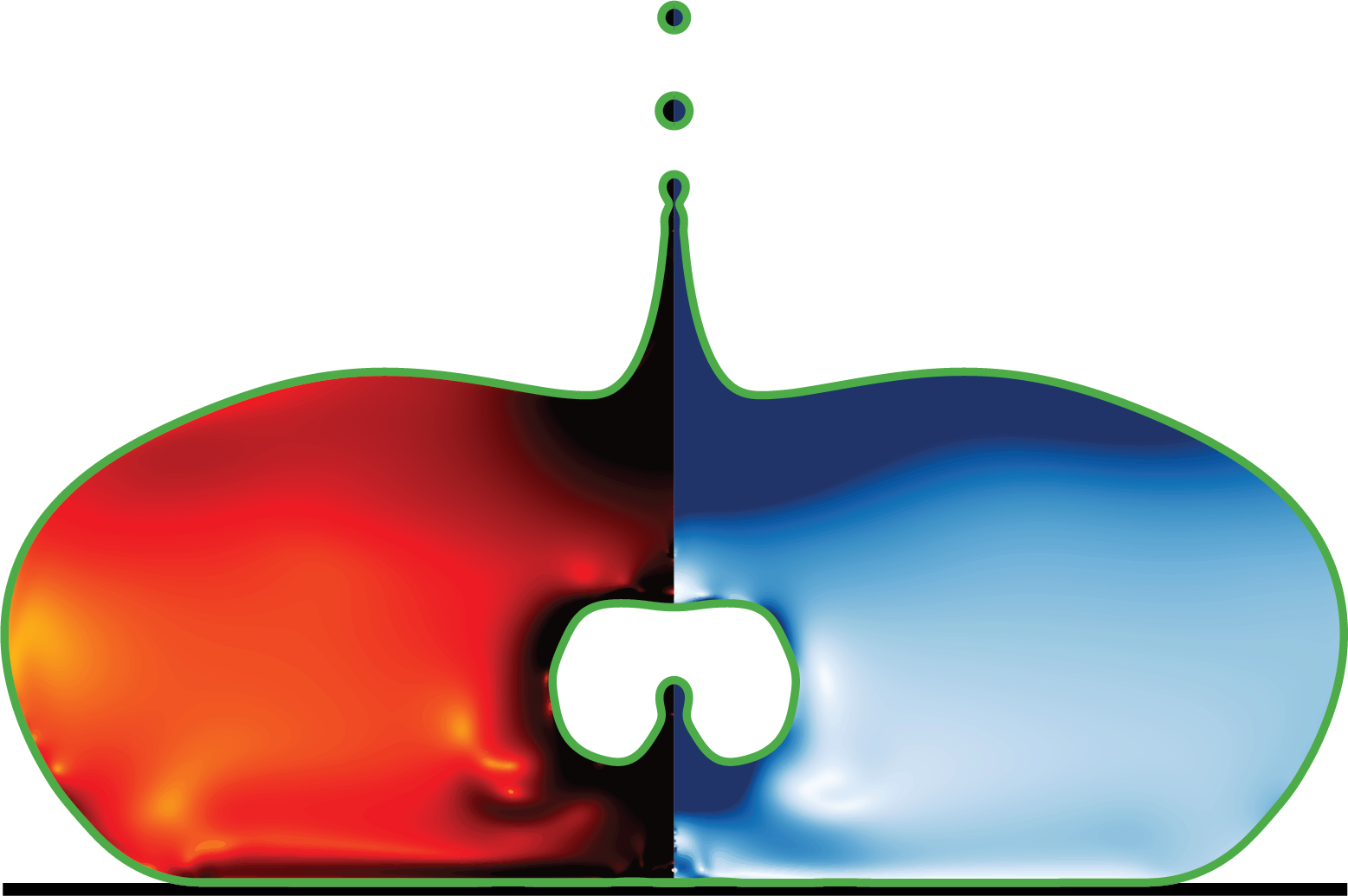postProcess/getData-LidDriven.c
getting Data from simulation snapshot
Author
Vatsal Sanjay Email: [email protected] CoMPhy Lab Physics of Fluids Department Last updated: Mar 8, 2025
#include "utils.h"
#include "output.h"
#include "poisson.h"
vector u[];
char filename[1000];
int nx, ny, len;
double xmin, ymin, xmax, ymax, Deltax, Deltay;
scalar T[], vel[], psi[], omega[];
scalar * list = NULL;Main entry point for processing fluid dynamics simulation data.
This function validates the command-line arguments and initializes the simulation by reading in the file name and domain parameters (xmin, ymin, xmax, ymax, ny). It registers the necessary scalar fields (T, vel, psi), restores simulation data, applies Dirichlet boundary conditions for both the velocity and streamfunction, computes the velocity magnitude and vorticity, and then solves the Poisson equation to update the streamfunction. Finally, it calculates grid spacing and interpolates the scalar fields over the designated grid.
Command-line arguments:
- arguments[0]: Program name.
- arguments[1]: Filename of the simulation snapshot.
- arguments[2]: Lower bound (xmin) of the x-domain.
- arguments[3]: Lower bound (ymin) of the y-domain.
- arguments[4]: Upper bound (xmax) of the x-domain.
- arguments[5]: Upper bound (ymax) of the y-domain.
- arguments[6]: Number of grid points along the y-direction (ny).
Return
Returns 1 if the argument validation fails; otherwise, the program proceeds with simulation processing.
int main(int a, char const *arguments[])
{
if (a != 7) {
fprintf(ferr, "Error: Expected 6 arguments\n");
fprintf(ferr, "Usage: %s <filename> <xmin> <ymin> <xmax> <ymax> <ny>\n", arguments[0]);
return 1;
}
sprintf (filename, "%s", arguments[1]);
xmin = atof(arguments[2]); ymin = atof(arguments[3]);
xmax = atof(arguments[4]); ymax = atof(arguments[5]);
ny = atoi(arguments[6]);
list = list_add (list, T);
list = list_add (list, vel);
list = list_add (list, psi);
/*
Actual run and codes!
*/
restore (file = filename);
// Top moving wall
u.t[top] = dirichlet(1);For the other no-slip boundaries this gives
u.t[bottom] = dirichlet(0);
u.t[left] = dirichlet(0);
u.t[right] = dirichlet(0);
// solve for the streamfunction
psi[top] = dirichlet(0);
psi[bottom] = dirichlet(0);
psi[left] = dirichlet(0);
psi[right] = dirichlet(0);
foreach() {
vel[] = sqrt(sq(u.x[])+sq(u.y[]));
}
foreach() {
omega[] = (u.y[1] - u.y[-1] - u.x[0,1] + u.x[0,-1])/(2.*Delta);
psi[] = 0.;
}
poisson (psi, omega);
FILE * fp = ferr;
Deltay = (double)((ymax-ymin)/(ny));
// fprintf(ferr, "%g\n", Deltay);
nx = (int)((xmax - xmin)/Deltay);
// fprintf(ferr, "%d\n", nx);
Deltax = (double)((xmax-xmin)/(nx));
// fprintf(ferr, "%g\n", Deltax);
len = list_len(list);
// fprintf(ferr, "%d\n", len);
double ** field = (double **) matrix_new (nx, ny+1, len*sizeof(double));
for (int i = 0; i < nx; i++) {
double x = Deltax*(i+1./2) + xmin;
for (int j = 0; j < ny; j++) {
double y = Deltay*(j+1./2) + ymin;
int k = 0;
for (scalar s in list){
field[i][len*j + k++] = interpolate (s, x, y);
}
}
}
for (int i = 0; i < nx; i++) {
double x = Deltax*(i+1./2) + xmin;
for (int j = 0; j < ny; j++) {
double y = Deltay*(j+1./2) + ymin;
fprintf (fp, "%g %g", x, y);
int k = 0;
for (scalar s in list){
fprintf (fp, " %g", field[i][len*j + k++]);
}
fputc ('\n', fp);
}
}
fflush (fp);
fclose (fp);
matrix_free (field);
}